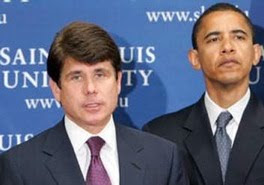iCollege iDiocy
Labels: distance learning, higher education
A blog about digital rhetoric that asks the burning questions about electronic bureaucracy and institutional subversion on the Internet.
Labels: distance learning, higher education
Labels: Middle East, UC Irvine, youtube rhetoric
Labels: conferences, participatory culture, youtube rhetoric
 To shoot has two meanings: to use a camera and to fire a weapon. A few days ago I wrote about the use of Flickr by the Israeli Defense Forces and the relationship between evidence and testimony when it comes to the digital rhetoric of government agencies. So it was interesting today to see the IHH Humanitarian Relief Foundation/TURKEY's photostream and a number of images called "Israeli commandos' bloody raid on Freedom Flotilla to Gaza 31.05.2010" in the Freedom Flotilla to Gaza set. I found it particularly interesting to see a still from the same interview in both the IHH set and the IDF set, even though those posting the image represent opposing rhetorical sides. Before the ship was boarded by Israeli commandos, there are images of men fishing and babies with pacifiers. After the ship was boarded, there are a number of pictures of the wounded being treated, which included a dramatic photograph of an Israeli soldier being treated by doctors who were Palestinian sympathizers. I am struck by two other aspects of the IHH Flickr set: the quality of the photographs is often aesthetically more compelling than the IDF photos, and the IHH uses the copyright symbol, while the IDF uses a creative commons license. (You can see the official IHH website here.)
To shoot has two meanings: to use a camera and to fire a weapon. A few days ago I wrote about the use of Flickr by the Israeli Defense Forces and the relationship between evidence and testimony when it comes to the digital rhetoric of government agencies. So it was interesting today to see the IHH Humanitarian Relief Foundation/TURKEY's photostream and a number of images called "Israeli commandos' bloody raid on Freedom Flotilla to Gaza 31.05.2010" in the Freedom Flotilla to Gaza set. I found it particularly interesting to see a still from the same interview in both the IHH set and the IDF set, even though those posting the image represent opposing rhetorical sides. Before the ship was boarded by Israeli commandos, there are images of men fishing and babies with pacifiers. After the ship was boarded, there are a number of pictures of the wounded being treated, which included a dramatic photograph of an Israeli soldier being treated by doctors who were Palestinian sympathizers. I am struck by two other aspects of the IHH Flickr set: the quality of the photographs is often aesthetically more compelling than the IDF photos, and the IHH uses the copyright symbol, while the IDF uses a creative commons license. (You can see the official IHH website here.)Labels: Middle East, visual culture
Labels: copyright, print media
 during a rally in Chicago , April 16, 2007.
during a rally in Chicago , April 16, 2007. The fellas in this picture "They never actually met face to face. What fellas? We don't see nothing!
The fellas in this picture "They never actually met face to face. What fellas? We don't see nothing!  The guy on the left? For all you know he's Santa Claus.
The guy on the left? For all you know he's Santa Claus.  Is the big picture clear? Not these pictures!
Is the big picture clear? Not these pictures!  Now, ain't that simple? They don't know each other and they never met!
Now, ain't that simple? They don't know each other and they never met!Labels: e-mail etiquette, elections
Labels: sexuality, social marketing, ubiquitous computing
Labels: Middle East, youtube rhetoric
 I've been thinking a lot about how a Flickr photostream being used by the Israeli Defense Forces to bolster their case about the boarding of the Mavi Marmara, an incident on international waters that turned into a deadly confrontation in which nine pro-Palestinian activists died. The more I look at these images, the more frustrated I become. I've been lucky in recent months to have been given a platform for my 12 Don'ts in government digital media-making, but I wish that there were more people making the pitch about rhetorical sensitivity on the Internet and in more languages.
I've been thinking a lot about how a Flickr photostream being used by the Israeli Defense Forces to bolster their case about the boarding of the Mavi Marmara, an incident on international waters that turned into a deadly confrontation in which nine pro-Palestinian activists died. The more I look at these images, the more frustrated I become. I've been lucky in recent months to have been given a platform for my 12 Don'ts in government digital media-making, but I wish that there were more people making the pitch about rhetorical sensitivity on the Internet and in more languages. Labels: Middle East, social networking, visual culture

Labels: participatory culture, social networking


Labels: environment, talks, UC Irvine
Labels: Middle East, youtube rhetoric
1. Acknowledge the problem without acknowledging specifics. This was our very first tweet:
@BPGlobalPR: We regretfully admit that something has happened off of the Gulf Coast. More to come.
2. Be open about one piece of bad news and no more. You want to appear human, but you don't want to appear like a bunch of idiots. There's another word I'd use there, but I don't think I can. It rhymes with mickleticks.
@BPGlobalPR: Sadly we can no longer certify our oil as Dolphin Safe.Thanks to Meena Kadri for the link!
Labels: economics, environment, social networking